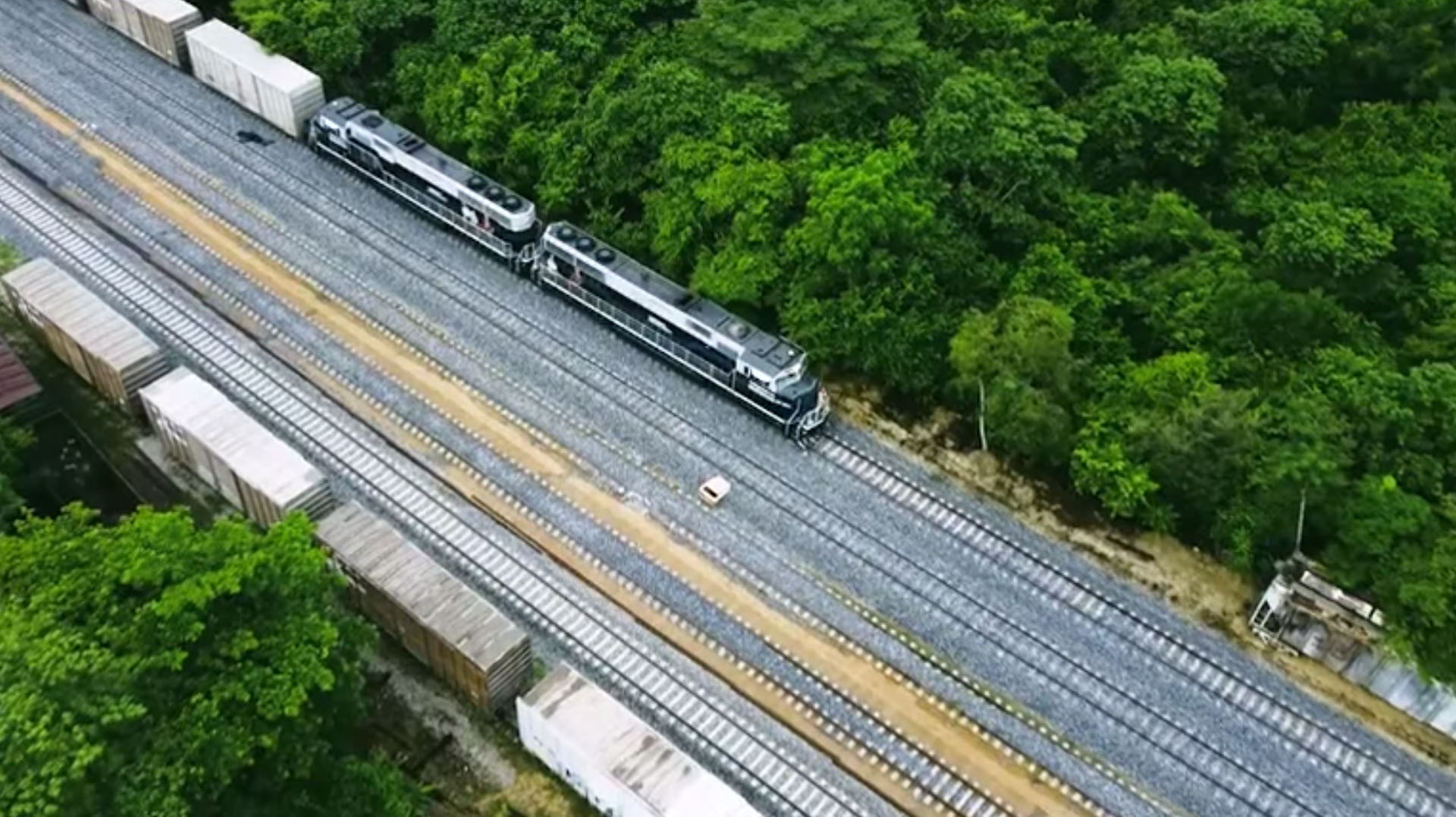
Mexico’s Ambitious Plan: A New Cargo Train to Compete with the Panama Canal
Mexico is embarking on an ambitious venture that could potentially reshape global trade routes and cement its position as a key player in the global logistics industry. The country is planning to construct a new cargo train network that will rival (or compliment) the Panama Canal in efficiency and capacity, offering an alternative transportation route for cargo destined for North America and beyond.
The proposed cargo train, known as the “Tren Transístmico” or Trans-Isthmus Train, aims to connect Mexico’s Pacific and Atlantic coasts, spanning the narrowest part of the country’s southern isthmus. By linking the ports of Salina Cruz on the Pacific coast and Coatzacoalcos on the Gulf coast, the train will provide a faster, more cost-effective alternative to shipping goods through the Panama Canal.
Transportation of Cargo
The Trans-Isthmus Train is designed to transport cargo rather than ships themselves. While the train will provide an efficient transportation route for cargo between Mexico’s Pacific and Atlantic coasts, it will not directly transport ships across the isthmus. Instead, cargo will be loaded onto the train at one port, such as Salina Cruz on the Pacific coast, and transported across the isthmus to the other port, such as Coatzacoalcos on the Gulf coast. At the destination port, the cargo will then be unloaded from the train and transferred onto ships for onward transportation to their final destinations.
This multimodal transportation approach, combining rail and maritime shipping, offers several advantages. It allows for the efficient movement of cargo across the isthmus, bypassing the longer and more congested route through the Panama Canal. Additionally, it provides flexibility for cargo owners, as they can choose from a variety of shipping options and routes to reach their final destinations.
The project is part of Mexico’s broader efforts to modernize its transportation infrastructure and capitalize on its strategic geographic location as a gateway between North and South America. With the expansion of global trade and the increasing demand for efficient shipping routes, Mexico sees an opportunity to position itself as a key logistics hub in the Americas.
The Trans-Isthmus Train is expected to offer several advantages over traditional maritime routes, including shorter transit times, lower transportation costs, and reduced reliance on congested seaports. Additionally, the train’s inland route will bypass potential bottlenecks and geopolitical risks associated with sea-based transportation, providing greater reliability and security for shippers and cargo owners.
Furthermore, the cargo train has the potential to spur economic development and job creation in the regions it serves, particularly in southern Mexico, where infrastructure investment and employment opportunities are sorely needed. By facilitating trade and commerce between Mexico’s Pacific and Atlantic coasts, the train will unlock new markets and foster greater connectivity and integration within the country.
Logistics Hubs
The Mexican government’s plans for the Trans-Isthmus Train project include the development of strategic logistics hubs along the route to enhance connectivity, efficiency, and economic development. These hubs will serve as key nodes in the transportation network, facilitating the movement of cargo between the Pacific and Atlantic coasts of Mexico. Here’s a closer look at some of the planned hubs:
- Salina Cruz Logistics Hub: Located on the Pacific coast, Salina Cruz is one of the main ports where the Trans-Isthmus Train will originate. The logistics hub in Salina Cruz will include facilities for cargo handling, storage, and distribution, as well as customs and administrative services. This hub will serve as a gateway for goods entering or leaving Mexico’s Pacific coast, providing seamless connectivity to the train network.
- Coatzacoalcos Logistics Hub: Situated on the Gulf coast, Coatzacoalcos is another key port along the Trans-Isthmus Train route. The logistics hub in Coatzacoalcos will mirror its counterpart in Salina Cruz, offering comprehensive services for cargo processing and transshipment. Additionally, this hub will serve as a vital link between the train network and maritime shipping routes, facilitating the transfer of cargo between rail and sea transport.
- Intermodal Terminals: In addition to the main logistics hubs in Salina Cruz and Coatzacoalcos, the Trans-Isthmus Train project will feature intermodal terminals at strategic locations along the route. These terminals will provide facilities for transferring cargo between trains, trucks, and ships, allowing for seamless transitions between different modes of transportation. By optimizing intermodal connectivity, these terminals will enhance the efficiency and effectiveness of the overall transportation network.
- Industrial Zones and Economic Corridors: The Trans-Isthmus Train project is expected to catalyze the development of industrial zones and economic corridors in the regions surrounding the logistics hubs and intermodal terminals. These zones will attract investment and promote economic activity, creating employment opportunities and driving regional development. By fostering synergies between transportation infrastructure and industrial development, these zones will maximize the socio-economic benefits of the train project for local communities.
Overall, the development of logistics hubs and intermodal terminals is a critical component of the Mexican government’s vision for the Trans-Isthmus Train project. These hubs will serve as focal points for cargo movement and trade facilitation, supporting Mexico’s efforts to enhance its connectivity and competitiveness in the global logistics market.
Mexico’s plan to build a new cargo train network represents a bold step towards enhancing its competitiveness in the global logistics arena. With its potential to rival the Panama Canal in efficiency and capacity, the Trans-Isthmus Train promises to revolutionize the way goods are transported between the Pacific and Atlantic coasts of Mexico and beyond. As the project moves forward, it will be fascinating to see how it unfolds and the impact it has on global trade dynamics.



No Comments